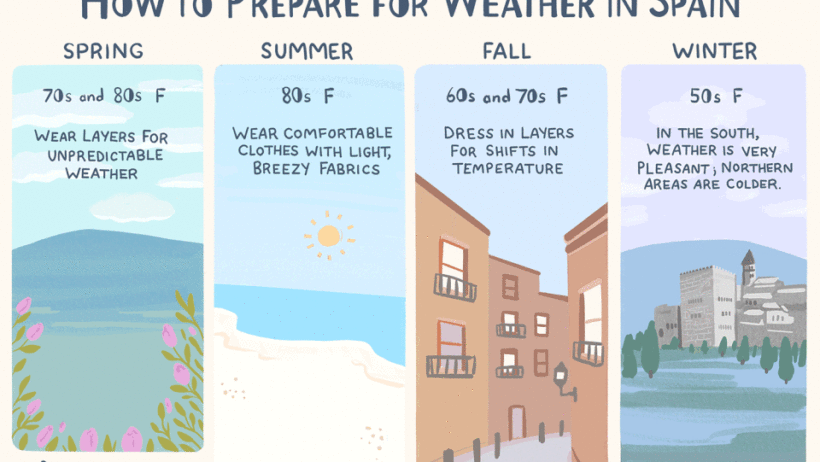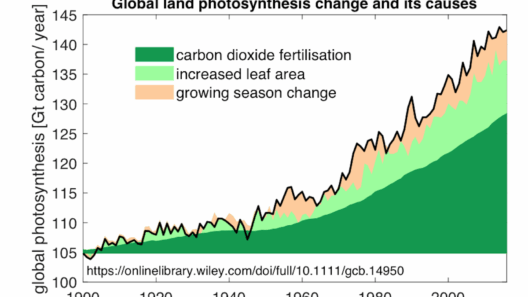When embarking on a journey to Spain, one inevitably confronts the fundamental dichotomy of weather versus climate. This distinction is paramount for travelers, as understanding these two intertwined yet divergent phenomena can dramatically influence their experience. In many ways, weather acts like the capricious muse of a painter, shifting and changing with an artist’s whim, while climate serves as the canvas that grounds this creativity—a long-term representation of Spain’s atmospheric personality.
The climate of Spain is as diverse as its rich tapestry of cultures. From the sun-soaked beaches of Málaga to the verdant hills of Galicia, the Spanish climate is shaped by a multitude of factors, including latitude, altitude, and proximity to bodies of water. This geographical diversity fosters a microcosm of climatic conditions encompassing a Mediterranean climate characterized by hot, dry summers and mild, wet winters in the southern regions, the oceanic climate of the northwest, and the continental influences in the interior. Consequently, to vaguely state that Spain’s climate is merely hot is akin to asserting that a watercolor painting is simply blue; it lacks the intricate nuances that render it exceptional.
Weather, on the other hand, can change as swiftly as a scene changes in a theater production. A traveler may set out under radiant sunshine, only to be met by the sudden deluge of rain that bursts like a forgotten dam. This unpredictability is not merely a triviality; it can have profound implications on one’s escapade—whether that’s the disruption of meticulously planned excursions, the dampening of outdoor festivities, or even the spontaneous delight of engaging with the unplanned aspects of travel. Hence, travelers are advised to arm themselves with real-time meteorological data and to consider the whims of the weather as part of Spain’s charm.
As we delve deeper into Spain’s climatic zones, a fascinating phenomenon emerges—regional variations. The inland areas, dominated by a continental climate, endure extreme temperatures; scorching summers can reach up to 40°C (104°F), while winters rarely wane above freezing. Calculate your visit for the late spring or early autumn, and the weather will likely grant you a more temperate panorama, where pleasant breezes make strolls through historic streets a delight. Coastal cities typically bask in Mediterranean moderations, with the gentle, embracing winds providing relief from summer’s intensity.
Then, there’s the mountain range of the Pyrenees, which introduces a climatic twist to the narrative. Here, the weather shifts from sunny to tempestuous at an alarming rate, where crystal-clear skies can hope to become tempestuous. For hikers and outdoor enthusiasts, this creates an exhilarating reality wherein strategic planning and awareness of weather patterns can bolster safety and success in their endeavors. The allure of the Spanish outdoors, punctuated with such unpredictability, is precisely why many travelers return, craving both the excitement and the meditative stillness of nature.
Moreover, Spain’s climate is not merely a backdrop; it’s an active participant in the country’s agriculture, cuisine, and culture. The famed vineyards of La Rioja, nurtured by a climate that teeters between arid and temperate, yield some of the world’s most esteemed wines. The role of climate here transcends mere sunlight and rainfall; it imbues the wine with unique flavors that are deeply interwoven with the land itself. This confluence of climate and culture culminates in experiences that are authentic and resonate with the very essence of place.
As Spain’s weather dances through the seasons, it becomes evident that understanding the interplay of these elements is essential for any traveler. When one visits during the autumn grape harvest, for example, they bear witness not only to a superb climate that ushers in mild temperatures but also to an opportunity for cultural immersion during the local festivities. Engage with the locals as they celebrate the fruition of their labors, and you may grasp something of the soul of Spain that cannot be experienced from the sidelines of tourist attractions.
This interplay obliges travelers to adopt a mindset that appreciates preparation blended with spontaneity. Flatly dismissing Spain’s various climates can limit one’s ability to engage fully with the locale. An active acknowledgment of the weather can shape practical decisions—ranging from what clothing to don to the best times to explore iconic cites such as Barcelona or Sevilla. Those who cower from the murmurings of ominous clouds might miss the chance to experience the lush, green landscapes that emerge post-storm, while others basking in relentless sunshine may fail to recognize the allure of rain-slickened cobblestones reflecting the vibrant hues of surrounding architecture.
In conclusion, recognizing that Spain’s weather and climate are not adversaries but rather collaborative components in the intricate narrative of place, permits travelers to embrace both the predictable and the unpredictable. By tuning into the subtleties of these atmospheric elements, one can navigate the diverse terrains and cultural landscapes of Spain with authentic curiosity. Thus, whether one finds themselves in a sunlit plaza enjoying tapas under a cobalt sky or huddled under an awning during a soft rain, the message remains clear: in Spain, embrace the weather as part of the journey, for it will enrich your experience beyond measure.








